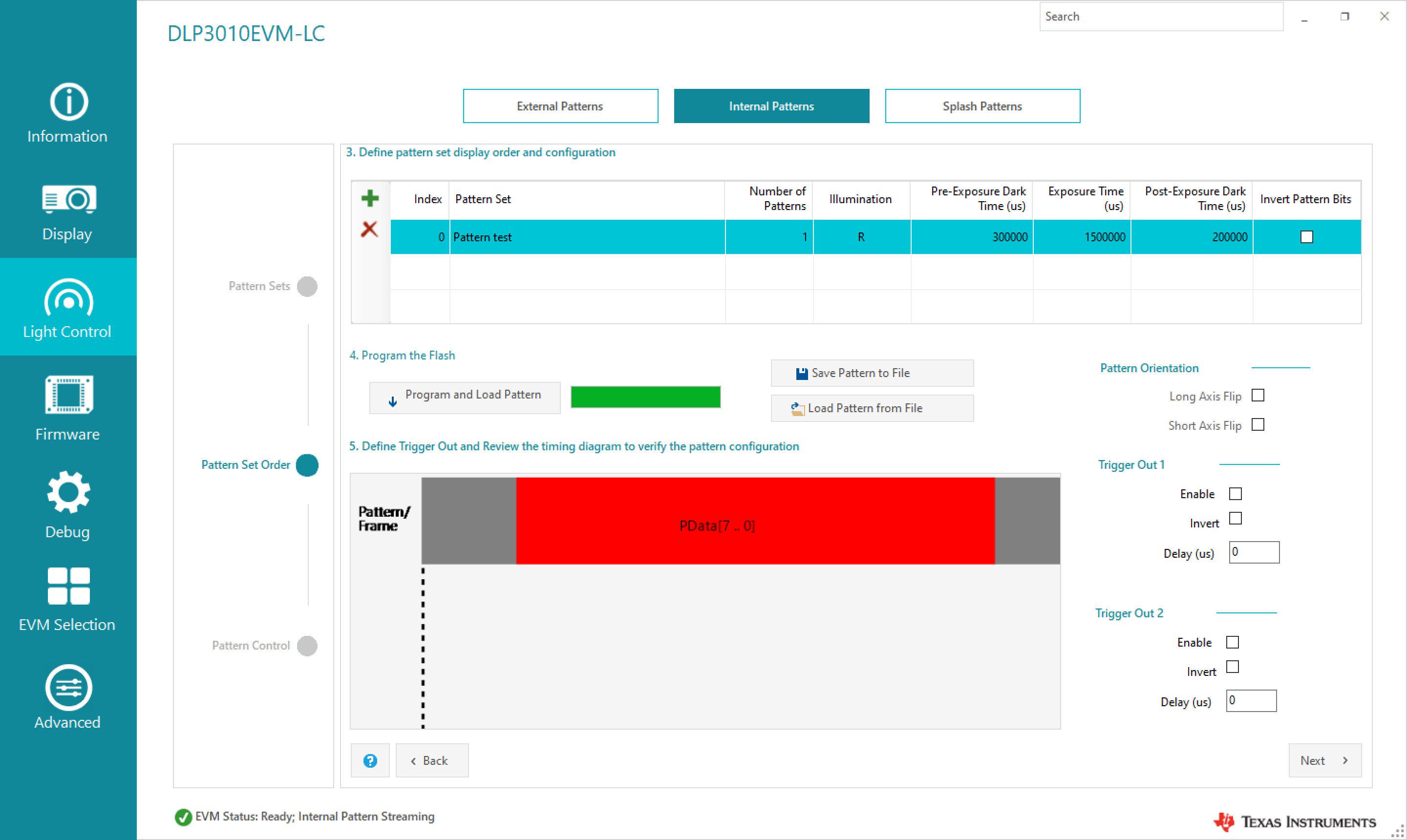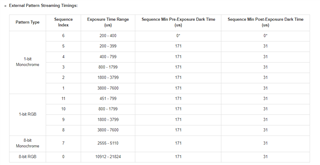Other Parts Discussed in Thread: DLPC3478, DLP4710EVM-LC
Great job! Here's a slightly modified version that is grammatically correct and makes a few small changes for clarity:
Dear TI Engineer,
I have noticed that more images are being projected than the number of patterns that were set, and several unusual patterns are being displayed (possibly inverted patterns, but I'm not sure). To investigate this issue, I created an 8-bit color ramp and projected it in internal patterns mode, which resulted in even more unexpected patterns being displayed. Moreover,the displayed times do not match the values that I set, especially for the Dark Times. For your reference, I have attached screenshots of the operations in GUI, the color ramp pattern I loaded, and a video of the projection.
Additionally, I would appreciate your advice on how to project a 2D pattern that I have designed myself, such as a checkerboard for calibration.
Thank you for your assistance.
Best regards,
Yu
Operations in GUI:



The color ramp pattern I loaded:

the video of projection(the exposure time start at:0:00:17):






